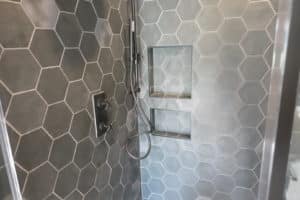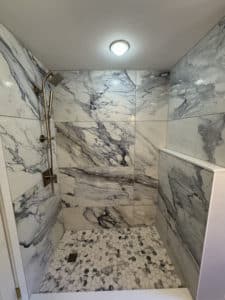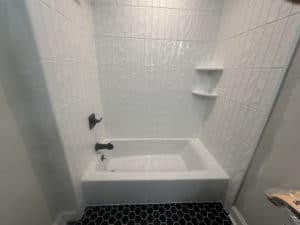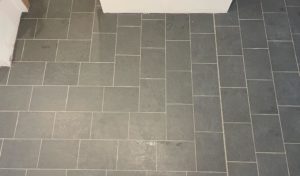Embracing Longevity with Clean Shower Tiles
When it comes to bathroom aesthetics and functionality, maintaining your shower tiles is paramount. In Far Hills, NJ, where homes often reflect elegance and style, homeowners understand the value of keeping fixtures in pristine condition. Proper shower tile maintenance not only enhances the beauty of your bathroom but also significantly extends the lifespan of your tiles.
Consistent care prevents common issues that can deteriorate tile surfaces, ensuring they remain a beautiful aspect of your home for years. It’s crucial not only from an aesthetic standpoint but also from a practical one, as neglected tiles can lead to costlier repairs over time. Regular maintenance can help avoid these potential pitfalls and safeguard your investment.
Most homeowners are keen to maintain, clean, and preserve their shower tiles effectively, without compromising on style or substance. With the right knowledge, maintaining the longevity and brilliance of your shower tiles becomes a manageable part of your home care routine.
So, let’s dive into how you can achieve this—starting with understanding the problem areas.
Understanding Shower Tile Problem Areas

One of the most notorious issues with shower tiles is mold and mildew. These unsightly fungi thrive in humid environments, and shower areas provide them with the perfect conditions. Mold and mildew not only affect the appearance of your tiles but can also pose health risks if not properly controlled. Regular shower floor tile cleaning can help keep these nuisances at bay.
Another persistent issue is soap scum. Soap residue, combined with minerals from hard water, forms a filmy layer on the tile surface. Over time, this buildup dulls the tiles’ shine and makes them appear unattractive. Additionally, it can make tiles slippery and hazardous. Consistent cleaning and usage of effective products are essential to prevent soap scum accumulation.
Each of these issues can contribute to deteriorating the surface if neglected, leading to more intensive cleaning regimens or even replacements. Addressing these common problem areas as part of your shower tile maintenance routine will enhance both the appearance and durability of your bathroom.
With these trouble spots in mind, let’s explore our first real steps in tackling the cleaning process effectively.
Step-by-Step Guide to Efficiently Clean Shower Tiles

Successfully cleaning shower tiles involves a combination of regular care and targeted deep-cleaning efforts. An initial cleaning routine helps manage daily build-up, while monthly deep cleans can tackle harder-to-remove grime and mold.
Start by assembling necessary supplies such as a non-abrasive cleaner, a scrub brush, a grout cleaner, and a microfiber cloth. When cleaning porcelain tile showers, it’s crucial to use products that won’t scratch or damage the finish.
Begin with rinsing the tiles with warm water to remove loose dirt. Next, apply the cleaner evenly across the surface and let it sit for a few minutes. This allows the cleanser to break down soap scum and mildew more effectively.
Following the soaking period, gently scrub the tile surface and grout lines with a brush, paying special attention to any visibly stained areas. Rinse thoroughly with water to remove all remnants of the cleaning solution. Finally, dry the tiles with a microfiber cloth to prevent water spots and streaks.
Establishing a day-to-day habit of rinsing and wiping down your shower after each use can mitigate the accumulation of soap scum and mold. Dedicate time once a month for a more detailed clean, ensuring every corner is addressed, especially in high-moisture spots.
The key is consistency; a little effort daily can prevent the growth of major issues, keeping your tiles looking fresh and new. Now that we have a cleaning framework in place, we can explore deeper cleaning techniques focused on one of the most challenging aspects—your grout.
Deep Cleaning: The Grout Challenge
Maintaining clean grout is essential for both the aesthetics and hygiene of your shower. Grout is porous and tends to absorb moisture, which can lead to mold and mildew, especially in a damp environment like a shower. It’s also more susceptible to staining than the tiles themselves, so regular attention is necessary to keep it looking fresh.
Start by choosing a suitable grout cleaner. For those who prefer a more natural approach, a mix of baking soda and vinegar can effectively lift dirt and stains. Apply the paste to the grout lines, scrub with a toothbrush or small grout brush, and let it sit for 10-15 minutes before rinsing thoroughly.
For tougher stains, consider using hydrogen peroxide or a commercial grout cleaner. Apply your chosen solution and let it work its magic for a few minutes before scrubbing. It’s crucial to use a brush with soft bristles to prevent damaging the grout. Regular maintenance using these techniques ensures your grout remains clean and resistant to discoloration.
To prevent future grime, resealing your grout every six months is advisable. Sealants act as a barrier, reducing the grout’s absorption ability and subsequently minimizing mold growth. However, always follow the manufacturer’s instructions when applying sealant to achieve the best results.
Grout cleanliness indeed adds significantly to overall shower tile maintenance. With these strategies in place, we can now expand on caring for different types of tile materials.
Customized Approaches for Different Tile Types

Tiles come in various materials, each requiring a slightly different care approach to ensure longevity. Whether your bathroom features ceramic, porcelain, or natural stone tiles, understanding the unique needs of each type will help you maintain their shine and durability.
Ceramic tiles are relatively easy to maintain due to their durable, glazed surface. However, avoid abrasive cleaners which can scratch or dull their finish over time. A mild detergent and warm water are typically sufficient for effective ceramic tile cleaning.
Porcelain tiles, similar to ceramic, are dense and less porous, making them robust against water and stains. For cleaning porcelain tile showers, choose pH-balanced cleaning solutions that do not damage the tile’s surface. Regular sweeping or dry dusting prevents dirt from becoming embedded, maintaining the tiles’ appearance.
Natural stone tiles, whether marble, travertine, or granite, require more delicate care, as they are more porous and prone to stains. Use a stone-specific cleaner or a gentle, pH-neutral solution to avoid etching or bleaching these sensitive surfaces. The use of sealers can enhance protection, but it’s crucial to test your cleaning product in an inconspicuous area first to ensure it is safe.
Understanding these subtle differences in maintenance needs allows you to apply the most effective cleaning method for each material, preserving their beauty and functionality for the long term. With these tile-specific methods in mind, it’s time to consider the roles that grout and sealants play in preserving the whole installation.
Tips for Maintaining Grout and Sealants

Choosing high-quality grout and sealants from the start can prevent many future headaches. These products not only bond your tiles together but also provide a protective barrier against moisture ingress. Investing in reputable products may cost more initially, but they promise durability and effective protection against typical shower problems.
In terms of maintenance, regular inspection is vital. Look for cracks or signs of wear in both grout and sealants. If you detect any issues, addressing them immediately with touch-up fixes can prevent larger scale repairs. Regularly cleaning and re-sealing as needed keeps these materials functioning as they should.
It’s essential to remember that even the best products need proper care to perform effectively over time. This means consistent cleaning, as mentioned earlier, coupled with regular maintenance checks. With the right approach to tile, grout, and sealant care, you’ll set a strong foundation that minimizes cleaning efforts and extends the overall beauty and life of your shower setup. Now, it’s time to explore expert advice to avoid common maintenance mistakes.
Expert Advice: Avoiding Common Tile Maintenance Mistakes
When it comes to maintaining shower tiles, avoiding certain common mistakes can save you time and effort while ensuring optimal results. One frequent error is using harsh cleaning products that can damage tile surfaces and grout. Bleach and ammonia-based cleaners, for instance, might seem effective, but they can erode grout and tarnish tiles over time.
Instead, select gentle, tile-appropriate cleaning solutions. Products with neutral pH levels are generally safe for all tile types and help preserve their finish. Also, avoid using hard-bristled brushes or abrasive pads that can scratch tiles and wear down grout. Soft bristles or microfiber cloths are ideal for maintaining the integrity of the surfaces you wish to preserve.
Another pitfall is neglecting ventilation. Adequate airflow is crucial for minimizing moisture buildup, which is a breeding ground for mold and mildew. Ensure your bathroom is well-ventilated by using an exhaust fan during and after showers. This simple step plays a vital role in prolonging the life of your tiles and keeping them looking clean and fresh.
Furthermore, don’t overlook regular maintenance. Waiting too long between cleanings allows dirt and grime to become more ingrained, making them harder to remove. Establish a schedule for routine and deep cleaning sessions to stay on top of maintenance and avoid overwhelming build-up.
With these expert-backed strategies to avoid common tile maintenance missteps, you can keep your shower tiles in top-notch condition without unnecessary hassle. Now, it’s time to wrap up with a comprehensive long-term strategy.
Your Long-Term Strategy for Beautiful Shower Tiles
Establishing effective habits and routines is key to maintaining the beauty and functionality of your shower tiles over time. Regular cleaning, tailored to the specific needs of your tile material and grout, will keep potential issues in check. Employing suitable products and techniques not only enhances appearance but also significantly extends the lifespan of your tiles.
Encourage yourself to be consistent with preventative measures and regular cleanings. Small efforts, performed frequently, can prevent tougher jobs down the line, ultimately saving you time, money, and stress. For residents of Far Hills, NJ, where bathrooms are often elegant and enduring, implementing these practices will keep your spaces in line with the standards of beauty synonymous with the area.
If you find yourself needing professional advice or assistance, or if your tiles require more than a straightforward cleaning session, consulting with experts like Kasco Tile LLC can be invaluable. Their experience and expertise in tile maintenance can offer personalized solutions that cater to your specific needs, ensuring your shower tiles remain as stunning as the day they were installed.
